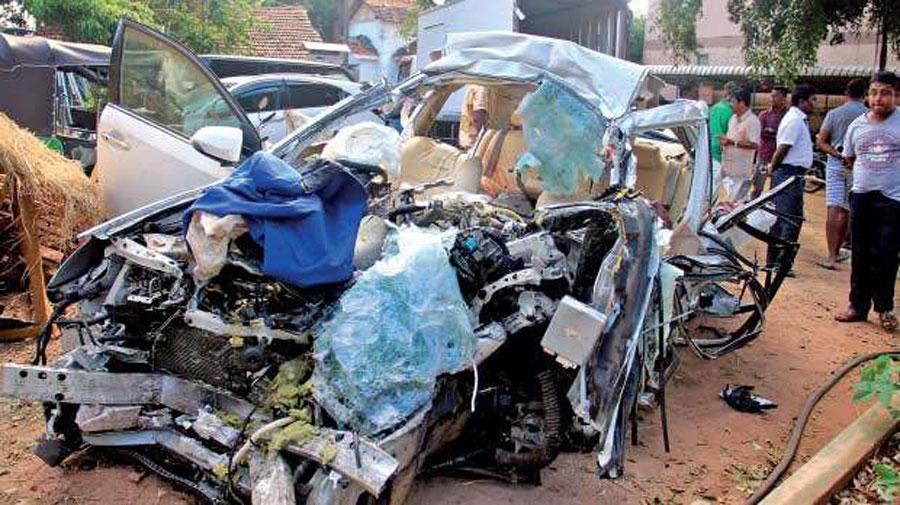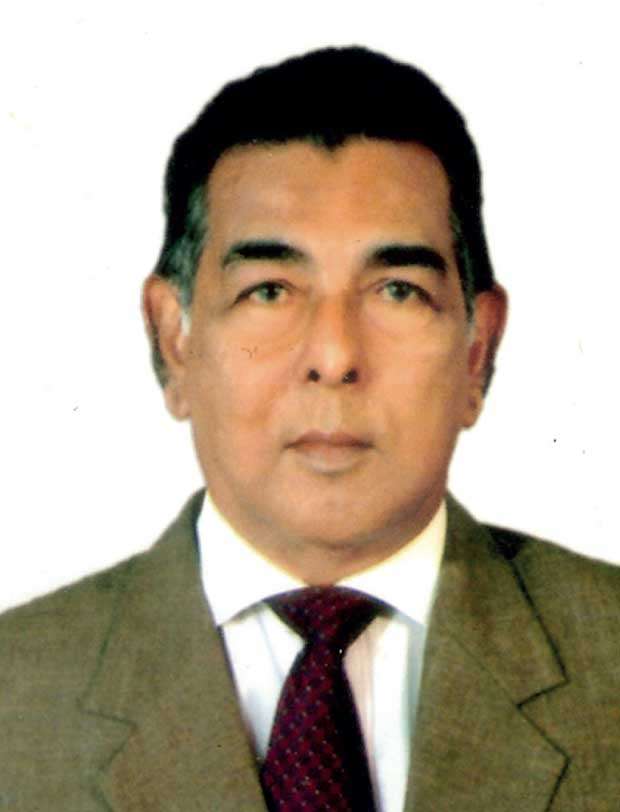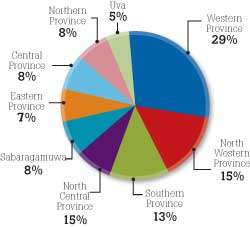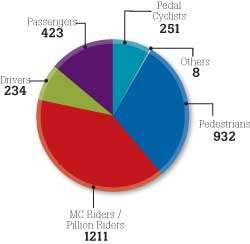24 Jan 2019 - {{hitsCtrl.values.hits}}

 Road accidents are on the rise and have come to a peak in recent times with fatal accidents causing multiple deaths being reported almost daily. On early Sunday morning six passengers were instantly killed in a road accident on the Colombo - Chilaw highway at Nainamadama when nine were travelling in a motor car at excessive speed crashed into a lorry from behind. Daily Mirror spoke to one of the top experts on road safety in Sri Lanka, Camillus R. Abeygoonewardena, the retired senior DIG, Traffic Administration and Road Safety.
Road accidents are on the rise and have come to a peak in recent times with fatal accidents causing multiple deaths being reported almost daily. On early Sunday morning six passengers were instantly killed in a road accident on the Colombo - Chilaw highway at Nainamadama when nine were travelling in a motor car at excessive speed crashed into a lorry from behind. Daily Mirror spoke to one of the top experts on road safety in Sri Lanka, Camillus R. Abeygoonewardena, the retired senior DIG, Traffic Administration and Road Safety.
EXCERPTS:
Q What are the main determinants you can attribute to the sharp increase of road accidents in Sri Lanka in recent times?
 The volume, velocity and variety of motor vehicles keep mounting on our roads at a tremendous speed since the society is increasingly dependent on motor vehicles for personal and professional needs, pleasure and due to enormous commercial activity proliferating island-wide. Therefore, we need to evolve or resort to a solution between the necessity for mobility and the greater necessity for safety in mobility.
The volume, velocity and variety of motor vehicles keep mounting on our roads at a tremendous speed since the society is increasingly dependent on motor vehicles for personal and professional needs, pleasure and due to enormous commercial activity proliferating island-wide. Therefore, we need to evolve or resort to a solution between the necessity for mobility and the greater necessity for safety in mobility.
The inevitable result of this phenomenon is the increased variety of traffic mingling on our roads to reach their destinations with varying success. Perhaps some do and some don’t, some others ending in emergency wards with deep scars, fractures and multiple injuries never to lead a normal life again. Road deaths have reached horrendous proportions in our country with one person reportedly killed every 3 hours and double or treble that number seriously wounded incapacitated for life. Total killed on our roads last year was 3,164, a greater majority of them 1,211 being riders and pillion riders of motorcycles. Another 930 being pedestrians, 423 were passengers of vehicles, 251 being Pedal cyclists, drivers 234 and other categories numbering 08 persons.
Traffic law enforcement needs to be given a much higher level of priority in police functions to reach desired objectives with adequate resources and manpower
Q What steps could Sri Lanka take to minimize road accidents?
There is a grave urgency for the state and all stake holders in the management of roads and traffic to address this challenge by implementing measures, systems inclusive of traffic regulations that have been adopted successfully in most motorized countries.
Road infrastructure and road rules must be modelled and modified on par with these countries though it costs billions and billions, as money spent for safer roads is a potential investment which could bring sweeping benefits in the longer term in economic and social spheres as road fatalities and congestions cost the country annually around 1.7 % of our GDP annually which the country can ill afford. So it is incumbent on the government and future governments to make road safety a State policy similar to policies adopted in some motorized countries.
The foremost proposal recommended to meet this volatile challenge is set up a Traffic and Transport Task Force initially to co-ordinate and co-relate all transport, traffic and highway related action plans and strategies and in the longer term to set-up a Traffic and Transport Authority under the purview preferably of the Hon: Prime Minister with relevant heads of ministries handling transport, highways, health, urban development and traffic safety to effectively evolve and implement a vigorous and a vibrant road safety action plan. This could be based on similar model of the Land Transport Authority of Singapore which came into existence in the nineteen eighties, which is functioning smoothly and effectively. By forming such an authority we would be able to remove the existing barriers or overlapping issues presently prevailing in the traffic & transport arena under different ministries.
By forming such an authority we would be able to remove barriers prevailing between rail, private and public transport services in the larger interest of the community and the country.
Perhaps to ease road congestion in the Western Province and thereafter extend to all other provinces is to introduce an efficient and a convenient public transport system overhauling the present system of private and government transport by introducing a completely novel public transport action plan perhaps under a build operate and transfer basis a Bus transport system perhaps with the intervention of a friendly country. Also getting the railway system modernized and streamlined within Colombo and the Greater Colombo region in a similar way also on a BOT basis. This of course is easier said than done with the political and trade union culture presently in vogue for their vested interests.

Camillus R. Abeygoonewardena, Retired Senior DIG, Traffic Administration and Road Safety
Q It is an established fact that many of our drivers - three wheeler drivers and motorcycle riders in particular - are extremely indisciplined and a large majority of deaths and injuries on roads involve them. Your comments?
When road indiscipline and road accidents are pervading the country, compounded by inadequacies in road infrastructure, a vibrant and a ruthless enforcement strategy undoubtedly is the need of the moment to enhance greater safety on our roads irrespective of who violates the law.
Traffic law enforcement needs to be given a much higher level of priority in Police functions to reach desired objectives with adequate resources and manpower, at least at first in the Western Province where the traffic congestion and road safety challenges are acutely felt and prevalent. It would be ideal if the Police Department could allocate the needed resources to implement a rigid and effective law enforcement strategy islandwide.
Three wheelers have contributed to numerous accidents and road deaths. Road rules and regulations have not been sufficiently or effectively enforced on this category and hence they have become intolerant in their road behaviour
Road i nfrastructure and road rules must be modelled and modified on par with developed countries though it costs billions and billions, as money spent for safer roads is a potential investment which could bring sweeping benefits in the longer term in economic and social spheres.
Q I suggest to you that three wheelers on our roads are excessive and contribute to many road accidents. Do you agree?
Regulations on three wheeler drivers were proposed way back in 1996, including the dress code for drivers and a colour code for Three Wheelers to enhance their safety through greater visibility. Only the Taxi Meters and preventing entry and exit from offside has been introduced, most others had not been implemented.
One regulation that needs to be introduced and enforced rigidly is to prohibit picking passengers when three wheelers are on the move. Picking passengers should be confined to demarcated or designated three wheeler stands only - at least within Greater Colombo region and perhaps in other Municipal Council limits as well. These laws have been in force in the city of New Delhi way back in 1996. This is an urgent regulation that needs implementation to discipline Three Wheeler drivers and to enhance safety. Stopping of Three Wheelers which are on the move endanger other users and have caused numerous accidents and near accidents. Their ‘happy go lucky ways’ of driving needs to be curbed with rigorous laws and enforcement strategies.
Orderliness of three wheeler parking should receive the focus of the local police, local authorities and the Motor Commissioner’s Department. Present haphazard parking at all locations and at intersections should cease forthwith as three wheeler drivers have become a law unto themselves.
Yes, three wheelers had contributed to numerous accidents and road deaths. Road rules and regulations had not been sufficiently or effectively enforced on this category and hence they have become intolerant in their road behaviour and their haphazard driving, uncaring, and boorish attitudes towards other users of the road which should receive the due focus of enforcement authorities.
Q Do you think the traffic law has to be further strengthened?
 Present day static law enforcement strategies that are in vogue are totally ineffective and inappropriate to meet the challenges to counter the volatile accident scenario and indisciplined road behaviour prevailing in the country. Perhaps present law enforcement is more to cater to periodical police inspections conducted by senior officers which are not generally target oriented to meet the prevailing chaotic road behaviour.
Present day static law enforcement strategies that are in vogue are totally ineffective and inappropriate to meet the challenges to counter the volatile accident scenario and indisciplined road behaviour prevailing in the country. Perhaps present law enforcement is more to cater to periodical police inspections conducted by senior officers which are not generally target oriented to meet the prevailing chaotic road behaviour.
Police should adopt law enforcement both by covert and overt law enforcement strategies combined with hightech enforcement techniques which are commonly adopted in all motorized countries very successfully. Deploying unmarked cars for traffic surveillance would also bring the desired results to curb errant driving. Displaying dummy replicas of traffic policeman and radio cars combined with physical police presence are other method to deter unsafe driver behaviour. A more vigorous campaign on drink driving island-wide is strongly recommended in a more systematized manner with adequate publicity through print & electronic media.
Videoing road scenes from vulnerable locations and screening motor offenders and deploying Police officers in civilian attire to observe traffic offences and booking the offending drivers at pre-determined locations subsequently needs to be adopted to bring the fear psychosis into play offending drivers. Some of these methods were adapted decades ago very successfully by the police to the extent that private buses went on strike for 3 days in the early 1990’s to express their displeasure on police enforcement strategies. However, police stood their ground and the strike fizzled out with both the media & public supportive of police action.
Law enforcement strategies do not mean maximizing the detection of motor offences by issuing spot fines or taking offenders to court but by the enforcement methodologies adopted to create a perception to the road user of the likelihood of being apprehended and thereby ensure correct and safe road behavior. More vibrant law enforcement is the need of the hour to enhance safer roads.
The government must set up a Traffic and Transport Task Force initially to co-ordinate and co-relate all transport, traffic and highway related action plans
Q What are the areas that are needed for modernization or improvement to increase road safety?
 In countries such as ours where road indiscipline is rampant to a very high degree, physical controls and restrictions adopting road engineering measures or features should receive a high degree of priority in the planning of road infrastructure. Such measurers will bring about a salutary effect on road behaviour.
In countries such as ours where road indiscipline is rampant to a very high degree, physical controls and restrictions adopting road engineering measures or features should receive a high degree of priority in the planning of road infrastructure. Such measurers will bring about a salutary effect on road behaviour.
Traffic signals at intersections in Colombo which are pre-timed should be done away at busy intersections and replaced with traffic signals operating on vehicle demand.
Traffic regulatory signage especially speed Limits indicating urban and non-urban limits which are located on roads which have 2 or more parallel lanes in the same direction should be exhibited on overhead panels or signboard posts on extended arms where motorists could see them clearly. Sufficient funds should be allocated to the RDA for this purpose. Levying a percentage of the fuel price being allocated to road maintenance is indeed a move in the right direction. Road surfaces and road infrastructure needs up-keeping and upgrading to meet desired road safety standards on our roads to enhance safety to desired levels.
Haphazard parking of motor vehicles both by day and night should be regulated and enforced more rigidly. During peak hours parking should be regulated based on peak demands. Using of main roads for parking of heavy vehicles such as buses lorries, containers and trailers should be totally prohibited both by day and night. Police should be empowered to engage companies to remove them to designated vehicle compounds and vehicle owners ordered to pay the towing charges which would serve as a deterrent to abate such offences.
Introducing rigid laws in most motorized countries such as Driver Improvement Point System (DIPS) will bring about a deterrent effect on bad road behaviour.
Q Aggressive driving mainly by young motorists has contributed to many a road accident. Your comments?
Perhaps in the prevailing road scenario with high intensities in traffic drivers in general are moving towards aggressive mode of driving with the stresses and strains encountered by them on roads.
This is a new challenge in policing activity where the law enforcers should give serious attention through hightech surveillance of traffic movement or deploying unmarked police cars.
This volatile road behaviour should receive the due attention of the law enforcement authorities if not indications are it is heading towards a huge chaotic road behaviour of an enormous magnitude.
Similarly seeking priority on roads by vehicles escorting politicians and others by displaying in-appropriate or unauthorized coloured light fittings to demand priority in traffic should be banned or totally disallowed by the authorities. Police should give sufficient publicity through print and electronic media to deter their usage. Enforcement action should also be taken to have them removed through joint inspections carried out by the police with examiners of motor vehicles.
Q Many countries use the Driver Improvement Point System (DIPS) to improve discipline among motorists and thereby minimize road accidents. Can Sri Lanka adopt a DIPS successfully to achieve similar results?
Introducing rigid laws enforced in most motorized countries such as Driver Improvement Point System (DIPS) will bring about a deterrent effect on road behavior. Habitual motor offenders are likely to get their driving licenses suspended or revoked based on the infringements committed in a given period. This law has had a salutary effect in other motorized countries, although proposed by the Police in late 1990’s, these laws lie in cold storage at the expense of several valuable lives perhaps due to technicalities involved in the implementation process. .
All drivers who are involved in serious fatal accidents with clear evidence of reckless and gross negligent driving, their driving licenses should be suspended until the determination of cases filed against them. Let’s hope the government and successive governments and all authorities will implement a policy to give the right impetus to secure safety and smooth movement of traffic on nations roads so that we could see miles & miles of smiles on our highways in the years to come.
10 Jan 2025 2 hours ago
10 Jan 2025 2 hours ago
10 Jan 2025 3 hours ago
10 Jan 2025 3 hours ago
10 Jan 2025 3 hours ago